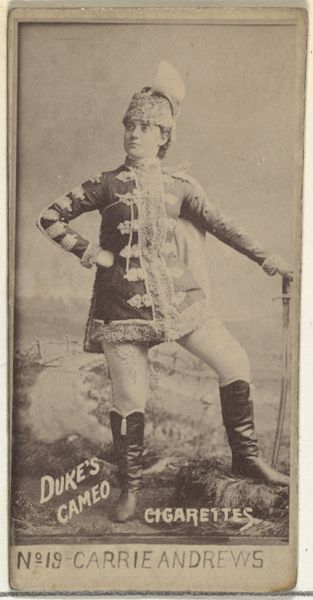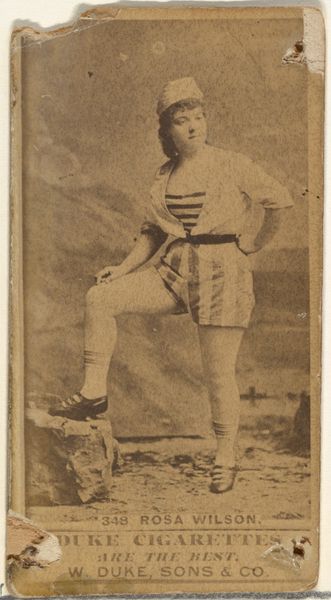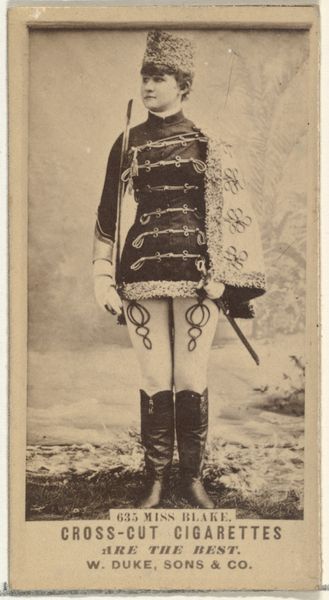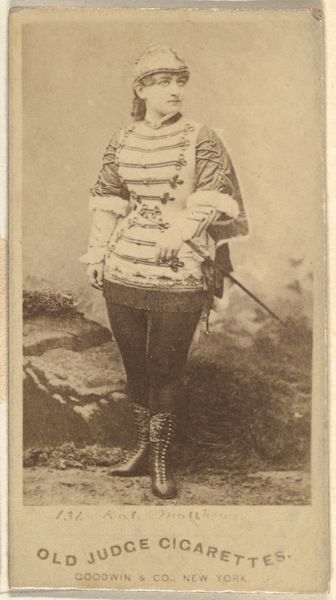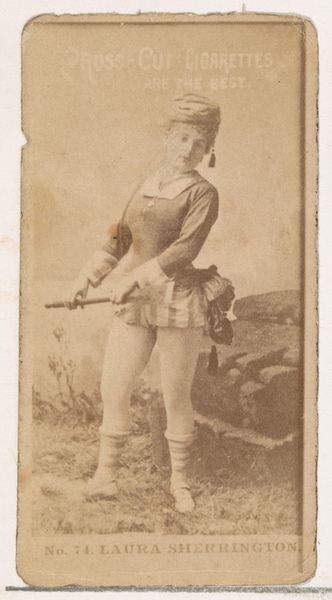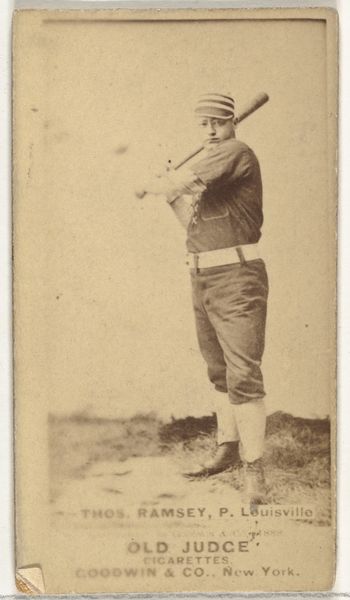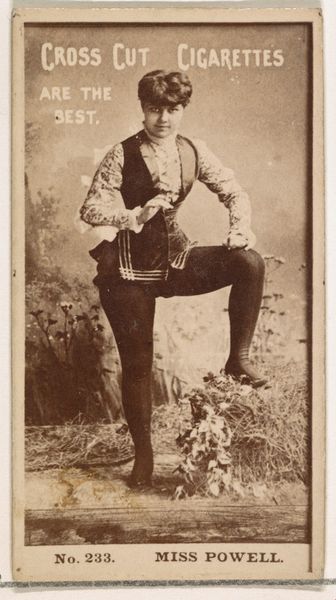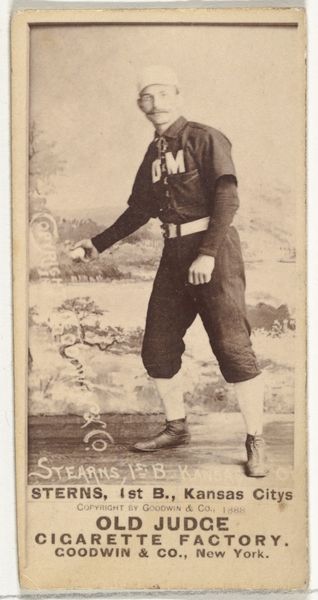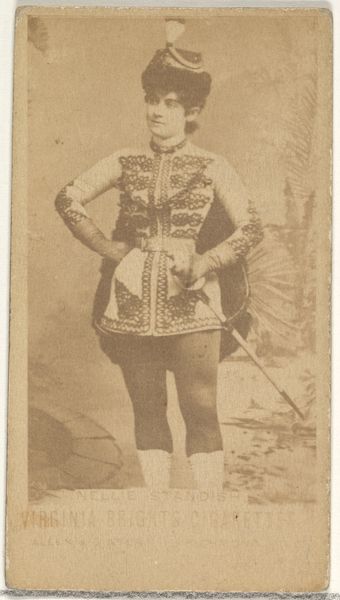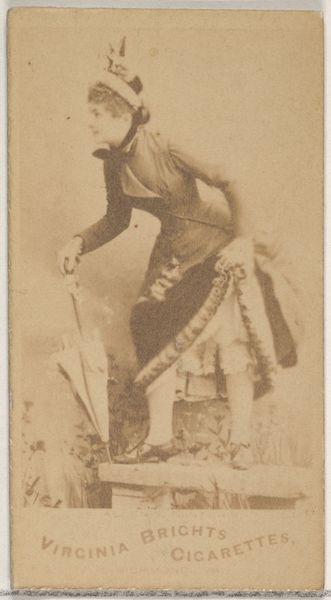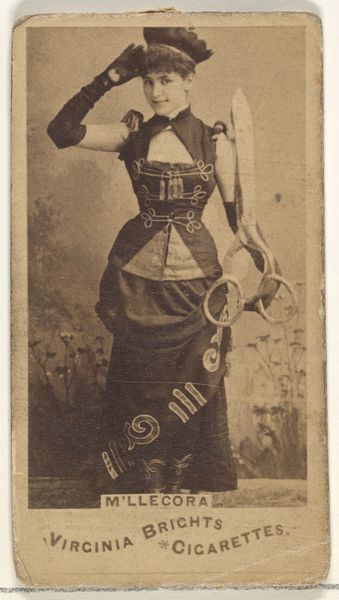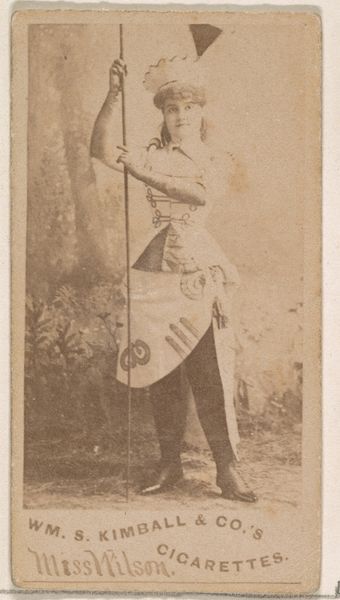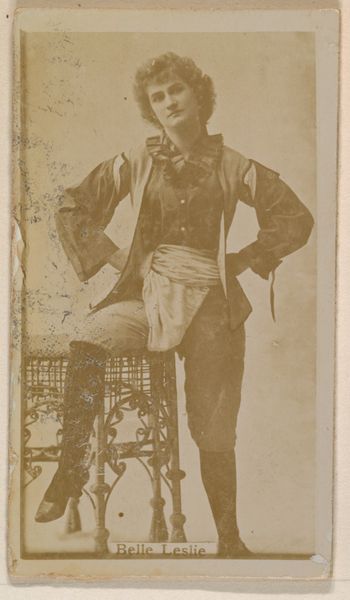
Card Number 132, Rose Temple, from the Actors and Actresses series (N145-2) issued by Duke Sons & Co. to promote Cross Cut Cigarettes 1880s
0:00
0:00
print, photography, gelatin-silver-print
#
portrait
# print
#
photography
#
gelatin-silver-print
Dimensions: Sheet: 2 5/8 × 1 7/16 in. (6.6 × 3.7 cm)
Copyright: Public Domain
Curator: Look at this intriguing little print from the 1880s. It’s a card, actually – part of a series issued by W. Duke, Sons & Co. to promote Cross Cut Cigarettes. The work is titled "Card Number 132, Rose Temple, from the Actors and Actresses series." It is a portrait of Rose Temple herself, I presume. What do you think? Editor: My initial impression is one of contrived power, oddly muted. She’s trying so hard to project authority in that uniform, the sword... but the softness of the photograph betrays a vulnerability. And that she needs these objects for validation in the first place also signals a desire. Curator: It’s quite staged, isn’t it? A gelatin-silver print. Rose Temple looks like she's dressed for a stage play, some military drama perhaps. Though this one has very limited tonality and feels bleached out in many areas, that military garb is something, though it’s unclear to what army or play it actually references. Editor: Precisely. I am interested in the performativity of gender at play here. In the late 19th century, to see a woman adopting masculine codes and military power – was that seen as empowering, subversive, or simply another form of commodification? Was it a statement on the blurring of gender lines, or more an advertising gimmick playing with the audience's desire to rebel? And her posture--is it really in charge? Or awkward? Curator: That's the delightful paradox. Rose, an actress, plays with perceived masculine codes to promote the distinctly unglamorous experience of smoking. Her "power" hinges entirely on our recognition of a woman adopting what was considered "manly". But given that cigarette ads often depicted idealized masculinity, is this a challenge to that idea? I am not quite sure. Editor: I suppose we can’t truly separate it from its commercial purpose. Tobacco companies profited immensely by marketing cigarettes as symbols of sophistication and liberation to both men and women, despite the well-documented health consequences. It also makes me wonder about the experience of actresses in this era – the pressures, the exploitation… Rose becomes a symbol for broader struggles of representation and visibility in that sense. Curator: An uneasy symbol perhaps! Rose stares confidently forward, even though, perhaps, she has lost some agency in this picture! These images remind me, as an artist, that a portrait might freeze someone forever. Anyway, whatever its shortcomings and ambivalence, I am rather fond of Rose's turn as soldier! Editor: And I am prompted to consider who ultimately held the real power, then as now. The actress or the corporation? Interesting, the things these photographs prompt.
Comments
No comments
Be the first to comment and join the conversation on the ultimate creative platform.
